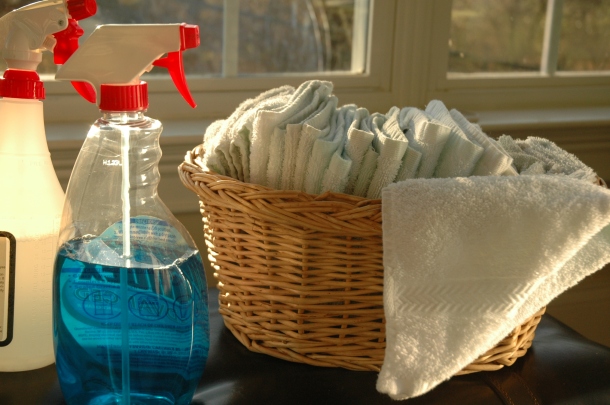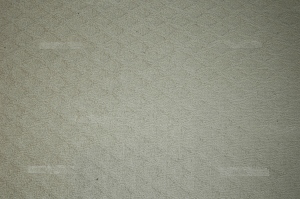“How do you keep your house clean?” I have been asked this a lot of times in my adult life, especially since I became a mother. There are a few contributing factors besides the obvious one, which would be that I clean it.
1. Big houses look clean more easily than small houses: People often think the opposite. In one sense, it’s true that a big house has more surfaces to clean, and clearly it takes longer to clean five bathrooms than it would one or two bathrooms. But in a big house, there are more places for things to spread out or be stored, while in a smaller house, more things are bound to be right in your line of vision, which seems messier. If your house is on the small side, it is even more important for you to reduce clutter in order to feel freer.
2. Reduce visual clutter: “Messy” and “dirty” are not the same thing, but they are close buddies who travel together. Some people think that if a room is messy, it’s okay as long as it’s not actually dirty. This is a myth. If it’s messy, it will soon be dirty by default, because it is so hard to clean in a mess, most people don’t do it. When people remark on my house being clean, the main thing they are responding to is lack of visual clutter. It’s not like they went around sniffing the toilets to see how clean they are.
What contributes to visual clutter? The state of your horizontal surfaces factor into this heavily. Do you have a lot of knick-knacks? Do the kids strew their belongings everywhere? What happens to their school papers, hats, jackets, baseball gloves, books, water bottles and stuffed animals when they walk in the door? You must train them not to walk in like a tornado of junk and shed it everywhere. (This is not easy. If they are already teenagers, you might just have to bide your time for a few more years instead.)
Process papers quickly. Throw away the junk mail very soon; pay the bills very soon; process everything to complete.
3. Reduce hidden clutter:
This means your closets, drawers, pantry, etc. Just focus on one if it’s too overwhelming to consider them all. Pick one closet that would greatly improve your life if it was not stuffed to the rafters. Spend 30 minutes (or two hours) pulling down everything and deciding whether it’s giveaway, throw away or keep. If it’s throwaway, put it in a trashbag and take it out of the house. If it’s giveaway, put it in the car to take to a charity, or call a charity right away for pick-up. Or list it on Freecycle. Whatever. Just get rid of it instantly, so you don’t start thinking about what you banished and let it creep back in . Aim to have at least one shelf completely clear. Remember that Feng Shui thing I said before about keeping an open shelf.
4. Use routines to keep clean going:
Set up a particular pattern you can stick with pretty closely for when you will empty the dishwasher, do the laundry, pay the bills, make the bed, and so on. I empty my dishwasher in the morning, so it will be ready to accept dishes throughout the day. We run it in the evening after dinner, no matter if it’s full to the top or not. If I waited until it was always totally full before running it, then it would run at odd times and be full of dishes at times inconvenient to empty. I do the laundry on a regular pattern, too; usually Wednesday and Saturday.
5. Train the kids:
I have a friend whose philosophy is that the children have their schooling and their sports and activities and therefore should not help with the house or the meals. I disagree with this view. Children will one day have a place of their own (sometimes it may seem that day will never truly come…) and they need to know how to take care of their things and prepare food. Besides, even with schooling, sports and activities, kids still have some time to contribute to the household, even if it’s mainly on the weekends.
It can also be a problem if you are too picky about how everything must be carried out. Don’t do that – and that’s coming from someone who is a perfectionist with a smattering of obsessive-compulsive disorder. If it’s going to make you nutsy, give them jobs that won’t make a gigantic big deal to you. My boys sometimes have jobs like pick up all the branches and sticks in the yard, fill the birdfeeder or groom the pets. It’s not going to make me crazy if they don’t do it exactly perfectly. I leave bathroom mirror cleaning strictly to myself. 😉
6. Make it simple to clean
How many times have I heard this in my life, “Well, I’m not spending hours a day cleaning my house; I’m out taking my kids to the park or reading to my babies or going to Disneyland.” In other words, the speaker feels badly that they don’t keep their house orderly, so they create a false dichotomy as if there are only two possible choices: enjoy your family and have a trashed house or be a militant shut-in who scrubs the floor 10 hours a day. Though my house is pretty clean and orderly most of the time, I spend a minuscule amount of time actually cleaning it during the week (more on the weekend) and I still go on many park days and library runs. (Although I’ve never been to Disneyland.)
If you have obeyed the clutter rules and you have trained your kids to help, you will only need to spend about 30 total minutes a day during the week and perhaps 2 hours on the weekend to have a house that looks good and is reasonably clean. If your house is small and you’re very ruthless about clutter, it could be less. If you’re determined to dust around a ton of stuff, it will be more.
Here’s another thing that matters: pets. Blue Collar Guy grew up on a farm, so in his mind, there was a place for animals. It was called the barn. He did not grow up with dogs and cats sleeping on the bed. When I first met him, it was pretty weird to me. After a couple of years living without indoor pets, though, I could really see his view clearly. Pets should be outside as much as possible, if you live in a space where it’s possible. Our dog and cats sleep in the garage at night, or during inclement weather. The rest of the time, they have a yard and ten acres to explore. I don’t need to clean cat hair or muddy footprints off of anything. I will say, though, that I know people love their pets and I have no expectation that you’ll turn your pets outside if you were sleeping with a Labradoodle on your bed up until now. That’s fine. Just know that there’s a price to be paid in cleaning for every pet who spends times indoors.
7. Lastly, be realistic: The people who remark about my house are invariably seeing it when I was planning to have guests. It doesn’t look that way 24-hours-a-day (or 25! 😉 ). I do maintain the house with a continuous eye to order, but it’s not neat as a pin from sun-up to sun-down. There are five people living here and two of them are not going away for school every day. There are constant minor messes from food preparation, science experiments, lego engineering and artistic inspirations. And mail. God, how I hate coping with the mail. Just know that because someone’s house is clean when they have you over for dinner does not mean it looks exactly like that all the time.
If your house is not neat or clean right now, decide to make it that way. Once it’s clean, it’s easy to keep it that way. I expect to be expanding on any or perhaps all of the topics above, so if there’s anything you’d especially like me to speak to more fully, just let me know.
-Danielle








